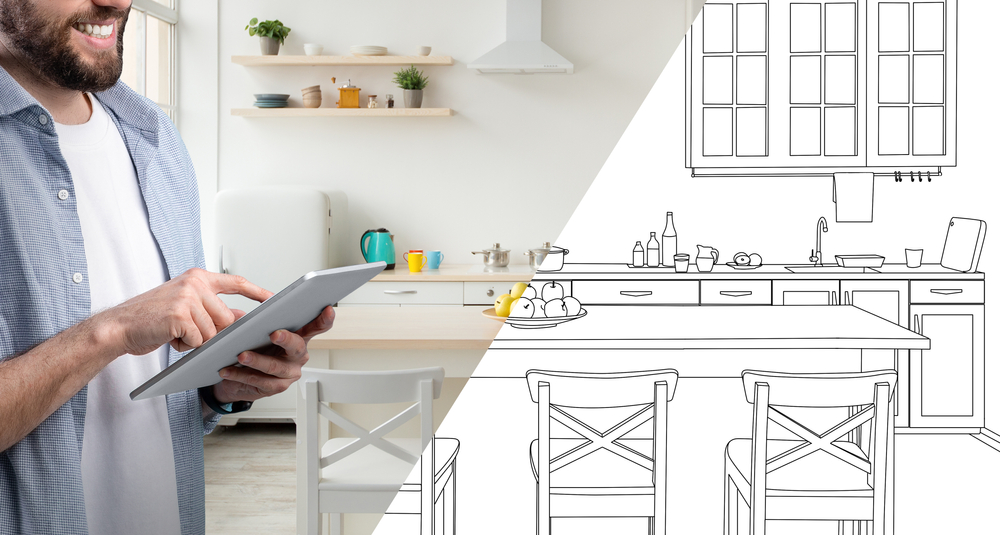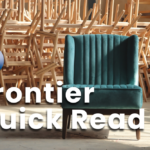
In a world where unique design is increasingly important to buyers, custom-manufactured products have gained immense popularity. From custom window treatments to distinctive bathroom cabinetry, consumers want designs that reflect their individuality. For custom product manufacturers, one thing remains constant amongst their customers. They want to see what their custom orders will look like before purchase.
How can that be accomplished? Traditionally, contractors or dealers provide the consumer with static images or 2D drawings during the design phase. This often falls short when conveying intricate product details. Consumers can now use 3D product visualization to see product details, giving them a modern way to preview their designs.
Evolution of Customer Buying Behaviors
Understanding consumer buying behaviors is crucial for businesses aiming to thrive in a competitive market. Gone are the days when buyers relied solely on textual descriptions or static images to make informed decisions. Today, they crave immersive experiences that allow them to interact with and visualize their customized products.
Buyer behaviors for custom-made products differ significantly from those for off-the-shelf items. When designing their home, office, or retail location, customers want products that resonate with their personality, preferences, and lifestyle. Consequently, businesses must understand the consumer psyche to create a seamless and satisfying purchasing experience.
This shift in consumer expectations has increased the demand for three-dimensional (3D) product visualization. Customers no longer want to imagine how a custom-made item will look; they want to see it come to life before their eyes. This is particularly true for products that involve intricate details, such as customized furniture and window coverings.
The fear of receiving a customized product that doesn’t meet their specifications is a significant concern for consumers. Buyers want assurance and confidence in the final product without error. They are also more inclined to purchase when they can visualize the final product, ensuring it aligns with their expectations.
The Power of 3D Product Visualization

Frontier CADFlow works with CAD integrators to bring custom creations to life.
In the quest to address buyer concerns and enhance customer satisfaction, businesses are turning to advanced design tools. Computer-aided design (CAD) programs and other design tools allow customers to visualize their custom orders precisely. These tools provide virtual product designs that showcase product attributes like measurements and colors.
CAD integrators, like Autodesk Inventor, ensure that all design elements in the preview are accurate. For instance, let’s say that a customer is ordering custom kitchen cabinets. The CAD program can provide specific configurations to Autodesk to produce a detailed 3D product visualization. The model accurately represents the placement and proportions of cabinetry hinges and handles as well as bevel design.
With custom orders, the use of 3D CAD drawing and design tools during the product configuration process becomes indispensable. Customers can actively participate in the design process, making choices and modifications in real time. This not only enhances their engagement but also ensures that the final product aligns perfectly with their expectations.
The Role of Virtual Reality (VR) Tools
While CAD product design provides an excellent digital representation, virtual reality tools take the customer experience a step further. VR allows buyers to immerse themselves in a lifelike simulation of their custom product. Virtual prototypes allow customers to explore their order from every angle and gain a genuine sense of how it will fit into their lives.
For example, a shopper is ordering a custom-designed living room furniture set. They can use VR to see how the pieces look and feel in their living space. This immersive experience not only builds confidence in the purchase but also creates a memorable and engaging shopping experience. Virtual reality tools bridge the gap between imagination and reality, making the customization process more interactive and enjoyable for customers.
The impact of VR goes beyond mere visual representation. It addresses the psychological aspect of the buying process. Customers feel a deeper connection to the product through digital prototype interaction before the transaction occurs. When they can virtually touch and examine the product through 3D product visualization, it leads to a higher likelihood of conversion.
Improving Product Comprehension and Communication
Integrating 3D product visualization tools with Configure, Price, Quote (CPQ) product configuration software enhances customer communication during the sales order entry and quoting process. This is especially helpful for custom manufacturer dealers or interior designers when working with their clients during the design phase.
These tools offer a dynamic model rendering that evolves as configuration options are selected. Any potential violations of model constraints are flagged during the design process since they can be predefined. This real-time feedback mechanism is invaluable for the product development process. It not only prevents potential mistakes but also streamlines communication between customers, dealers, and manufacturers.
Removing Potential Problems
Blending advanced design, configuration tools, and virtual reality in the customization process is a strategic move to eliminate surprises and foster customer satisfaction. By providing a clear preview of an order, custom manufacturers can address common concerns related to design accuracy, functionality, and aesthetic appeal.
One of the critical benefits of using these tools is the ability to catch potential issues before production begins. Customers can review their orders in 3D and provide feedback, allowing for adjustments and refinements. This process saves time and reduces the likelihood of displeasure upon delivery and installation.
Increasing Customer Trust and Loyalty

Build better customer relationships through the use of advanced design tools.
In the competitive landscape of custom manufacturing, building trust with customers is paramount. Advanced design tools help to meet customer expectations and demonstrate a commitment to transparency and quality. Buyers develop a sense of trust in the brand when they can actively participate in the design process and see a virtual prototype.
Once established, this trust translates into customer loyalty. Satisfied customers are more likely to return for future purchases and recommend the brand to others. In the age of social media, word-of-mouth recommendations can significantly impact a brand’s reputation and market reach. The investment in 3D product visualization not only builds strong customer relationships but also aids in business growth.
The Future of Customer-Centric Manufacturing
As custom manufacturing businesses adopt more customer-centric business models, the role of 3D product visualization becomes increasingly pivotal. The advanced design tools provide a competitive advantage, not just an upgrade in technology.
The power of a 3D product visualizer lies not only in its ability to showcase products realistically. It also can enhance understanding and communication between all parties involved in the process. Businesses that leverage these technologies are better positioned to meet the evolving expectations of their customers.
The Friedman Offering
In complex, make-to-order and engineer-to-order environments, Friedman has always delivered rich functionality for custom manufacturers. Friedman’s expansive product offering includes state-of-the-art integration tools to achieve the best customer design experience. Frontier CADFlow allows you to take advantage of the 3D product visualization and design capabilities of Autodesk Inventor®. This accelerates the design and delivery of your configured products and reduces your costs in the process.
CADFlow fully leverages your investment in the power of 3D technology. It automates detailed 3D models, drawings, and manufacturing data specific to each configuration. It also includes data and images that meet the requirements of your customer. The outputs are produced using both your existing models and the Frontier configuration rules, eliminating data redundancy.
Conclusion
Successful custom manufacturers must understand and adapt to buyer behaviors as the demand for personalized products grows. Integration of advanced design and virtual reality tools sets a new standard for custom order clarity and buyer satisfaction.
The marriage of 3D product visualization and customer buying behaviors benefits both consumers and businesses. It fosters a deeper understanding of products, mitigates potential errors, and cultivates trust throughout the purchasing journey. Companies that harness the power of 3D product visualization will undoubtedly set the standard for positive customer interaction.
Contact us to learn more about Frontier CADFlow or the complete line of innovative Friedman products.



